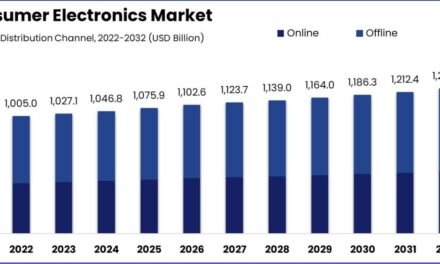Pricing strategies in the consumer electronics sector have a significant impact on competition, as they influence market dynamics, consumer behavior, and the positioning of brands. Here are some key ways in which pricing strategies affect competition:
1. Price Wars and Market Saturation:
- Aggressive Pricing: Brands often engage in price wars to capture market share, particularly in highly competitive segments like smartphones, televisions, and laptops. By offering products at lower prices, companies can attract budget-conscious consumers and outpace rivals. However, this can erode profit margins, especially for companies that cannot achieve economies of scale.
- Market Saturation: As the market becomes saturated with similar products, companies may resort to aggressive pricing to differentiate themselves. This can lead to even lower prices, which can benefit consumers but pressure smaller companies or those with higher operational costs.
2. Premium Pricing and Brand Loyalty:
- Brand Positioning: Some companies, like Apple and Sony, use premium pricing strategies to create an image of high quality, exclusivity, and innovation. By positioning their products as premium, they attract customers who are willing to pay more for perceived better performance, design, and customer service. This helps build strong brand loyalty, making it harder for competitors to lure customers with lower-priced alternatives.
- Price Skimming: Brands often use price skimming strategies, where they launch new products at a high price point and gradually lower it over time. This is common in the release of flagship smartphones, gaming consoles, and high-end home appliances. Early adopters pay a premium, while later buyers can benefit from reduced prices as competition increases.
3. Penetration Pricing:
- Market Entry: New entrants into the consumer electronics market often use penetration pricing, where they set low initial prices to quickly gain market share and establish a customer base. Once they achieve a certain level of market penetration, they may gradually increase prices. This strategy forces established competitors to either match the lower prices or risk losing customers to the new brand.
- Innovation and Differentiation: To compete with lower-priced competitors, established companies may differentiate their products through added features, better performance, or superior customer service, rather than solely relying on price.
4. Bundling and Cross-Promotions:
- Product Bundling: Companies often bundle related products together (e.g., smart home devices, headphones with smartphones) at a discount to increase sales volume and promote complementary products. Bundling can drive higher revenues by encouraging customers to buy more products than they might have individually, thereby increasing competition for consumer attention.
- Cross-Promotions: Manufacturers may partner with other companies to offer discounts or promotional deals, helping to expand their customer base. This can create competitive pressure in the market, as consumers might be more drawn to the bundled offers from one brand versus standalone products from others.
5. Psychological Pricing:
- Charm Pricing: Companies often price their products just below a round number, such as $999 instead of $1,000, which influences consumer perception and makes a product appear more affordable. This psychological pricing strategy can be especially effective in high-volume product categories like smartphones and televisions, where price plays a significant role in consumer decision-making.
- Price Anchoring: By displaying a higher original price next to a discounted price (e.g., “Was $499, Now $299”), companies create a sense of value in the eyes of consumers. This strategy can drive purchases and influence how consumers perceive pricing in comparison to competitors.
6. Dynamic Pricing and Price Discrimination:
- Dynamic Pricing: With the use of sophisticated algorithms and data analytics, consumer electronics companies can adjust prices based on real-time demand, competitor pricing, and consumer behavior. This flexibility helps brands remain competitive while maximizing profits during periods of high demand (e.g., holiday seasons, product launches).
- Price Discrimination: Companies may engage in price discrimination by offering different prices to different segments of the market, such as students, professionals, or senior citizens. This allows companies to maximize profits while catering to different customer needs and spending power, creating competition among various market segments.
7. Impact on Smaller Competitors:
- Smaller companies or startups with limited budgets might struggle to compete with larger corporations that have the ability to undercut prices. These smaller companies might focus on niche markets or differentiate through unique features or customer experiences to remain competitive in a price-sensitive market.
- Product Differentiation: Smaller companies may compete by offering innovative features or better customer service, rather than focusing solely on price. Offering specialized or customizable products can be a way to stand out in a market dominated by big players with low-cost products.
8. Global Competition and Regional Pricing:
- Geographic Differences: Pricing strategies vary across regions based on local competition, consumer behavior, and economic conditions. A product might be priced lower in one country due to intense local competition or higher demand in another region. Companies may adjust prices to cater to different market conditions, leading to localized competition between international brands.
In summary, pricing strategies in the consumer electronics sector drive competitive dynamics in various ways, from direct price wars to differentiation through premium pricing. Companies must balance price with quality, innovation, and customer loyalty to remain competitive in an increasingly crowded market.














